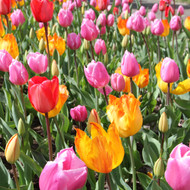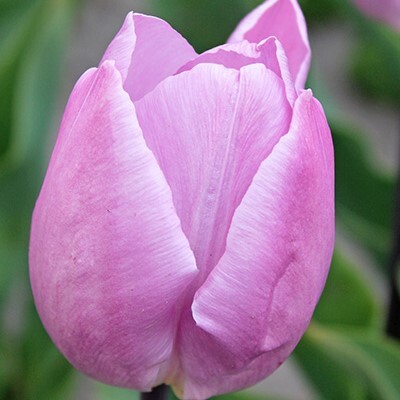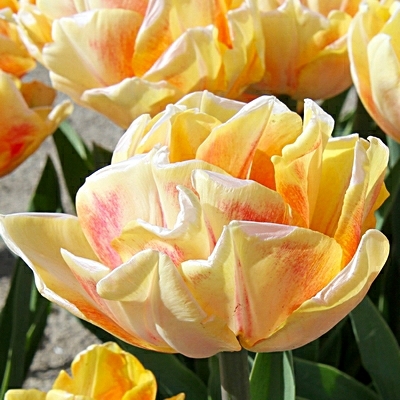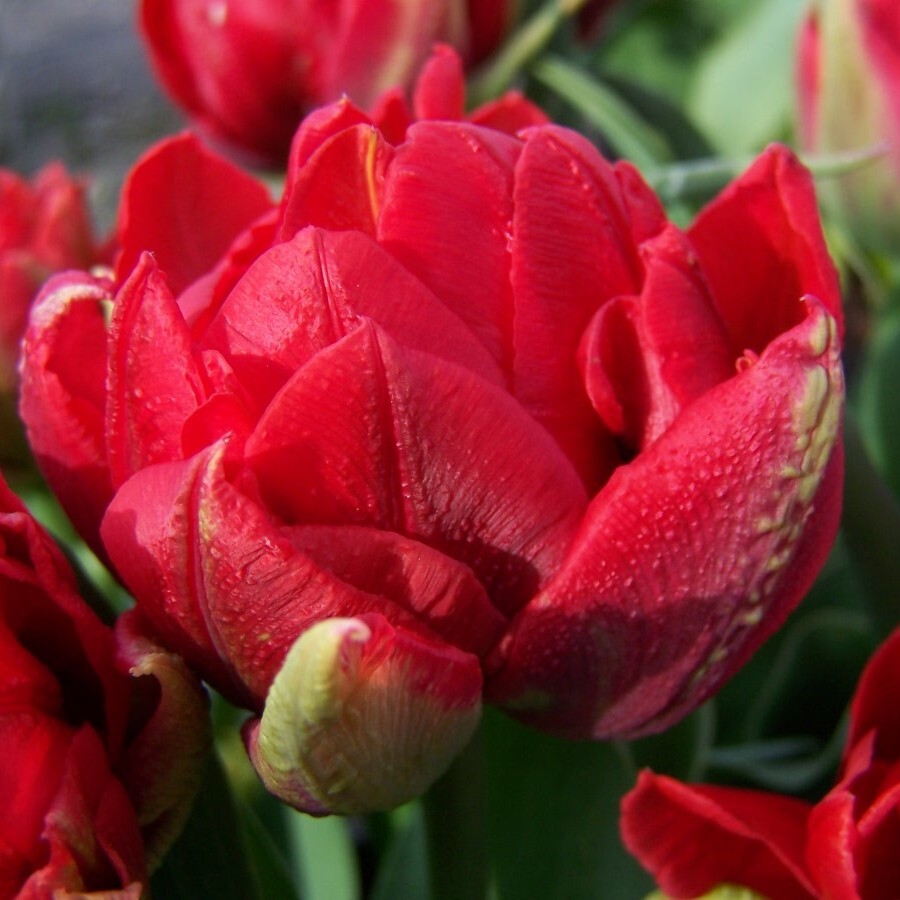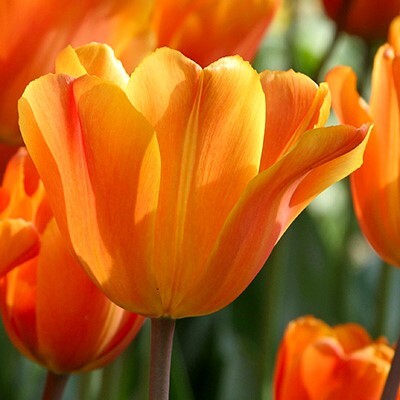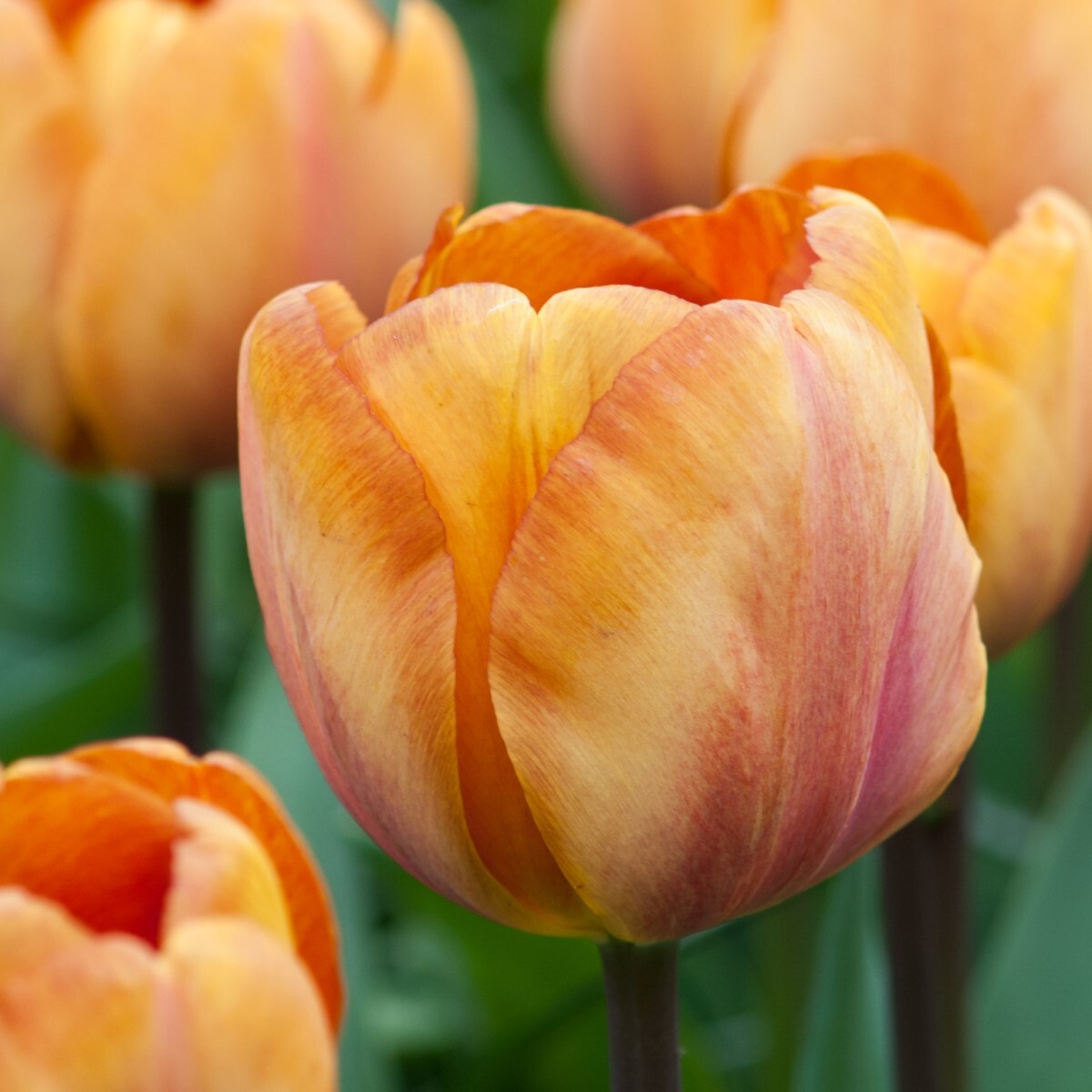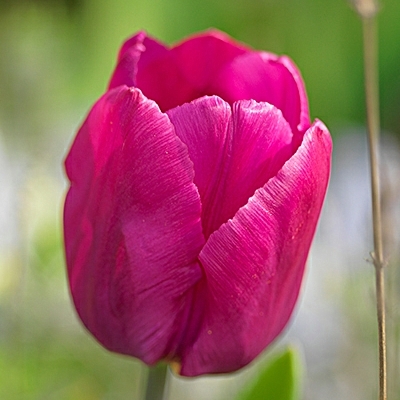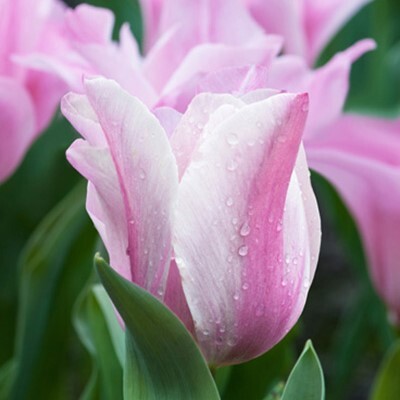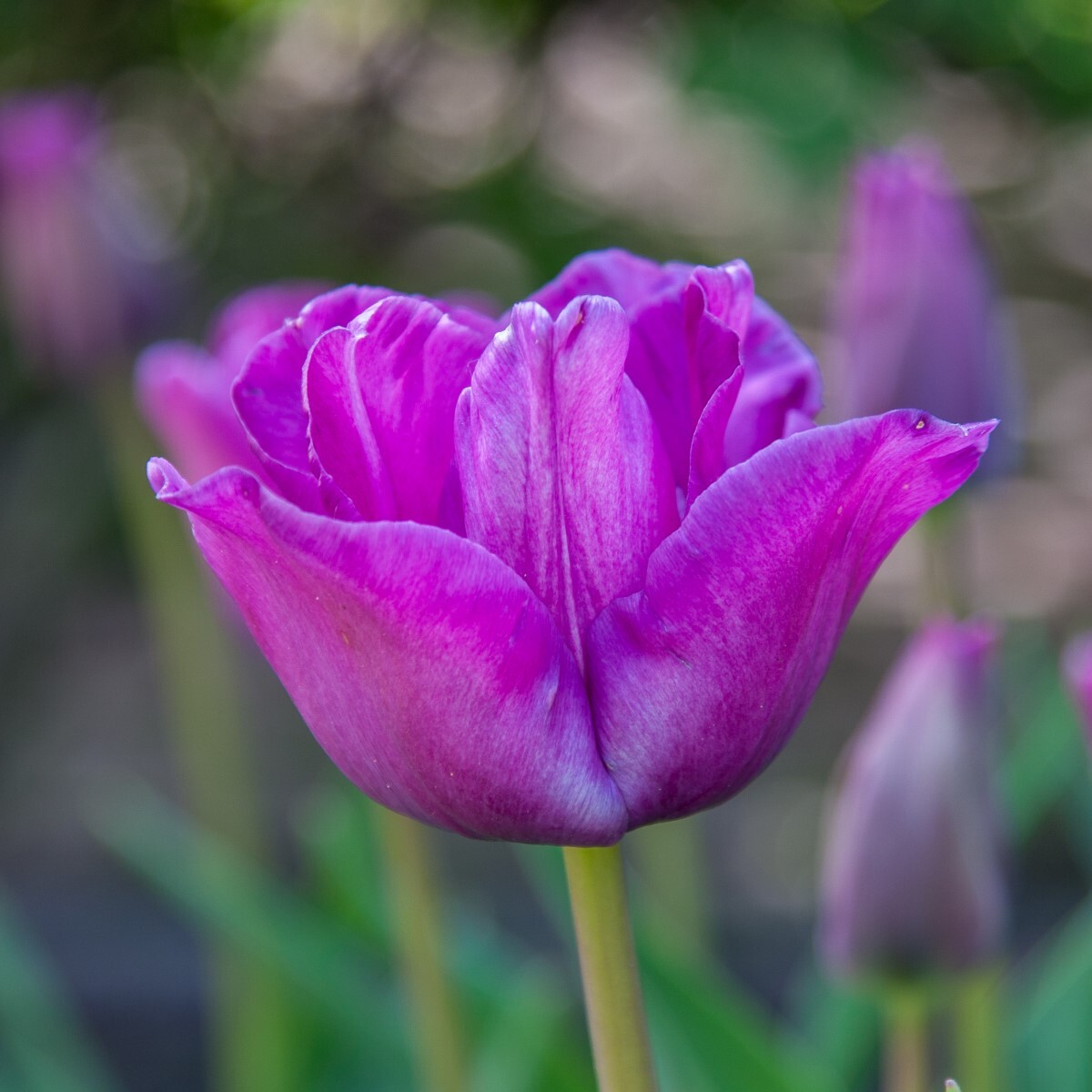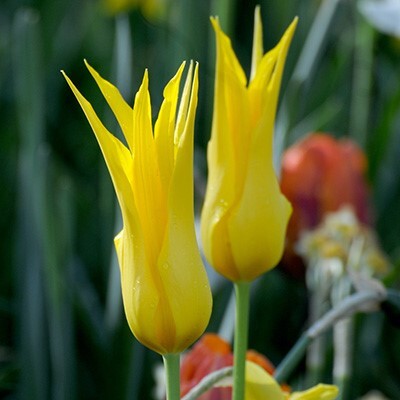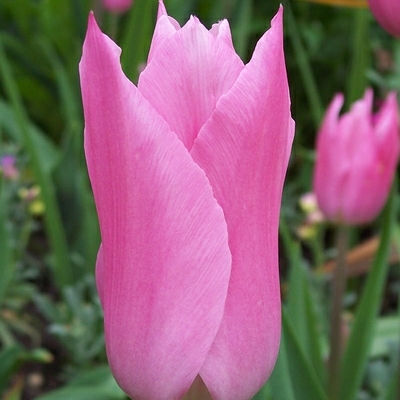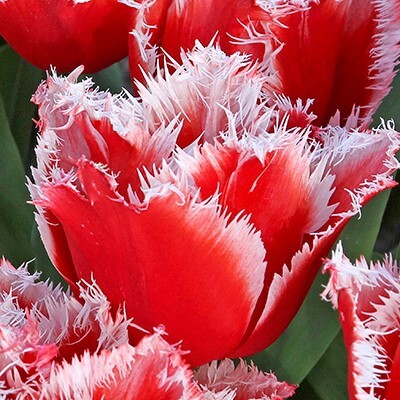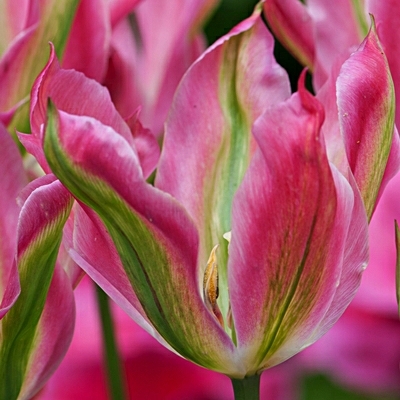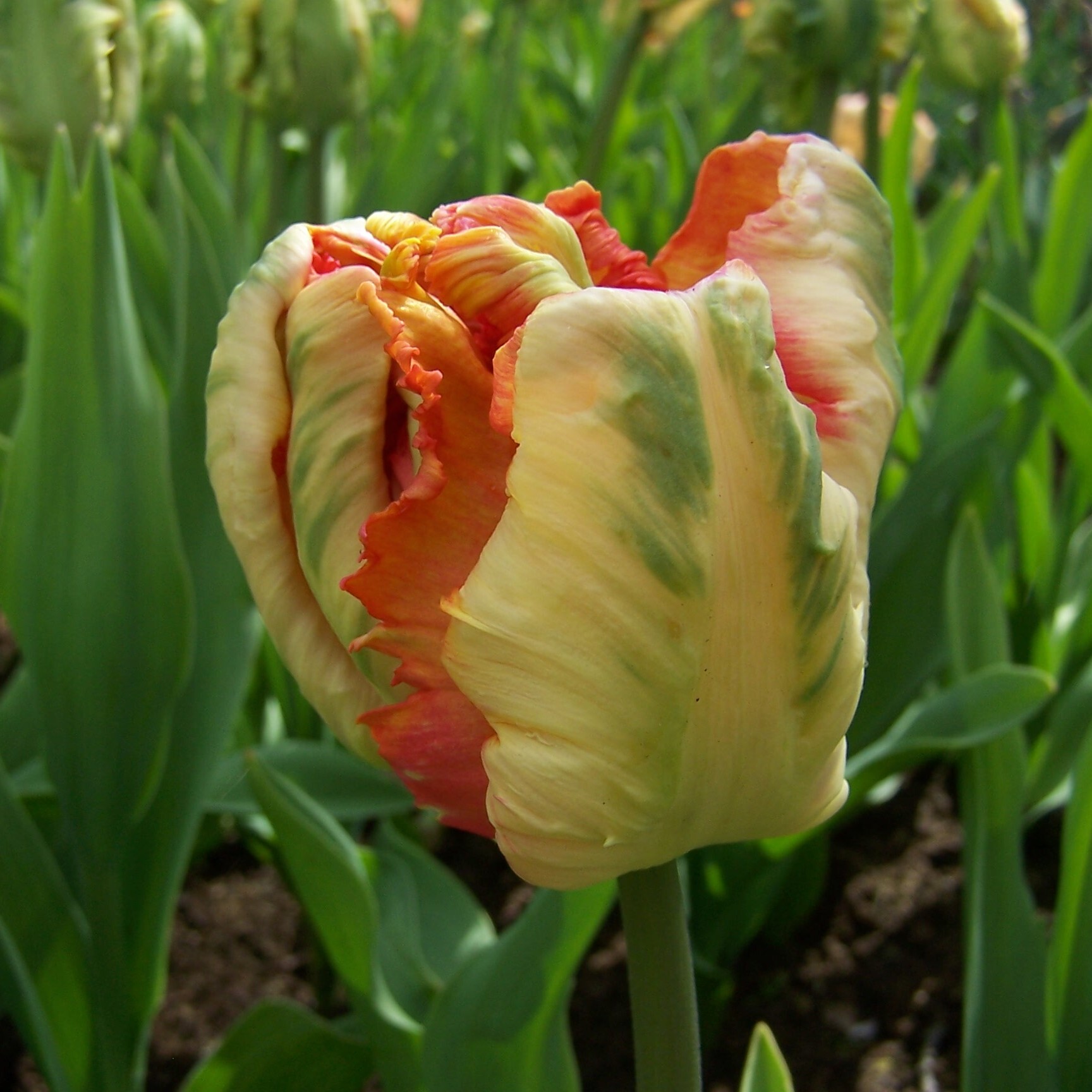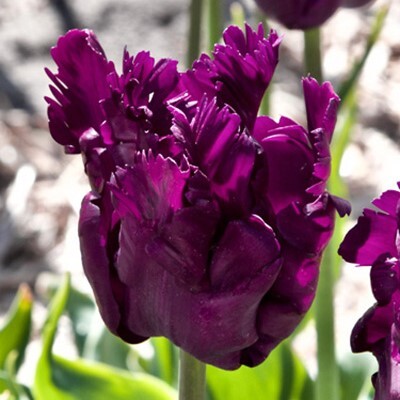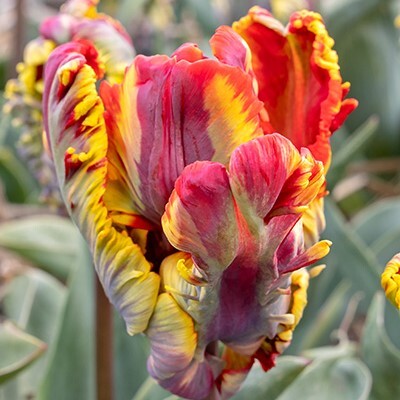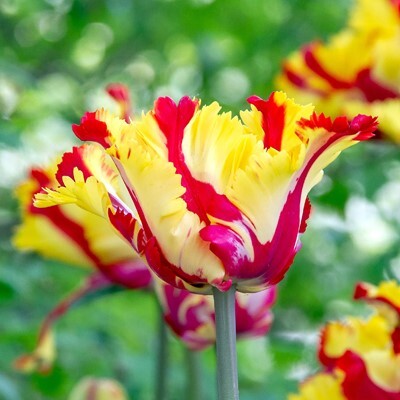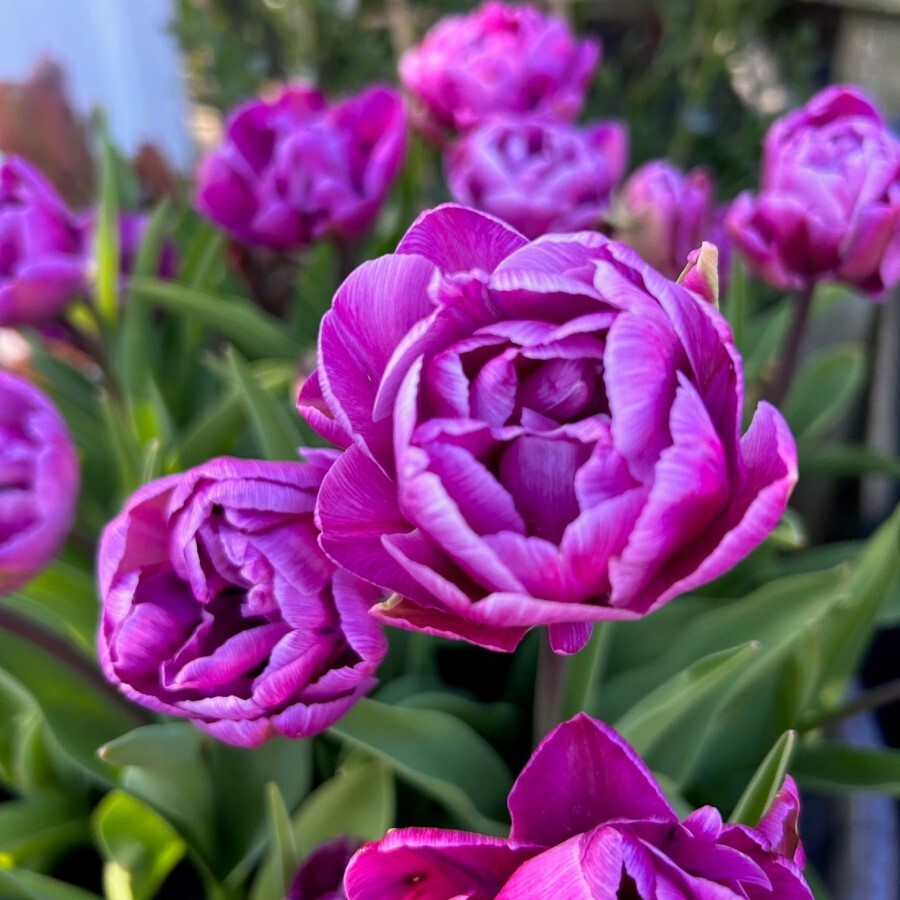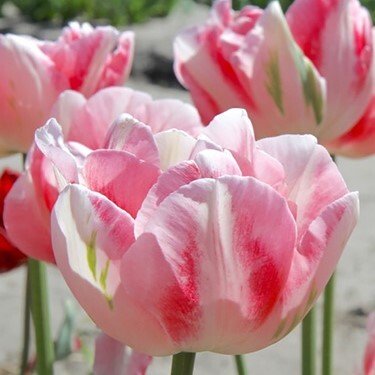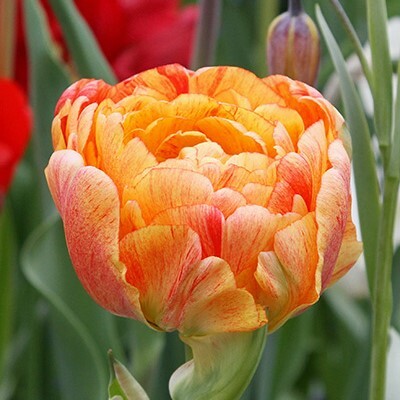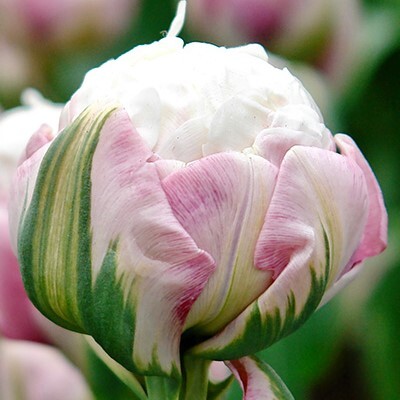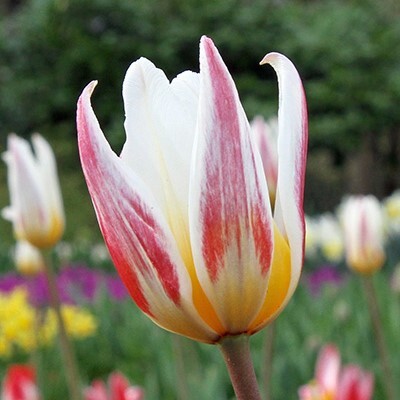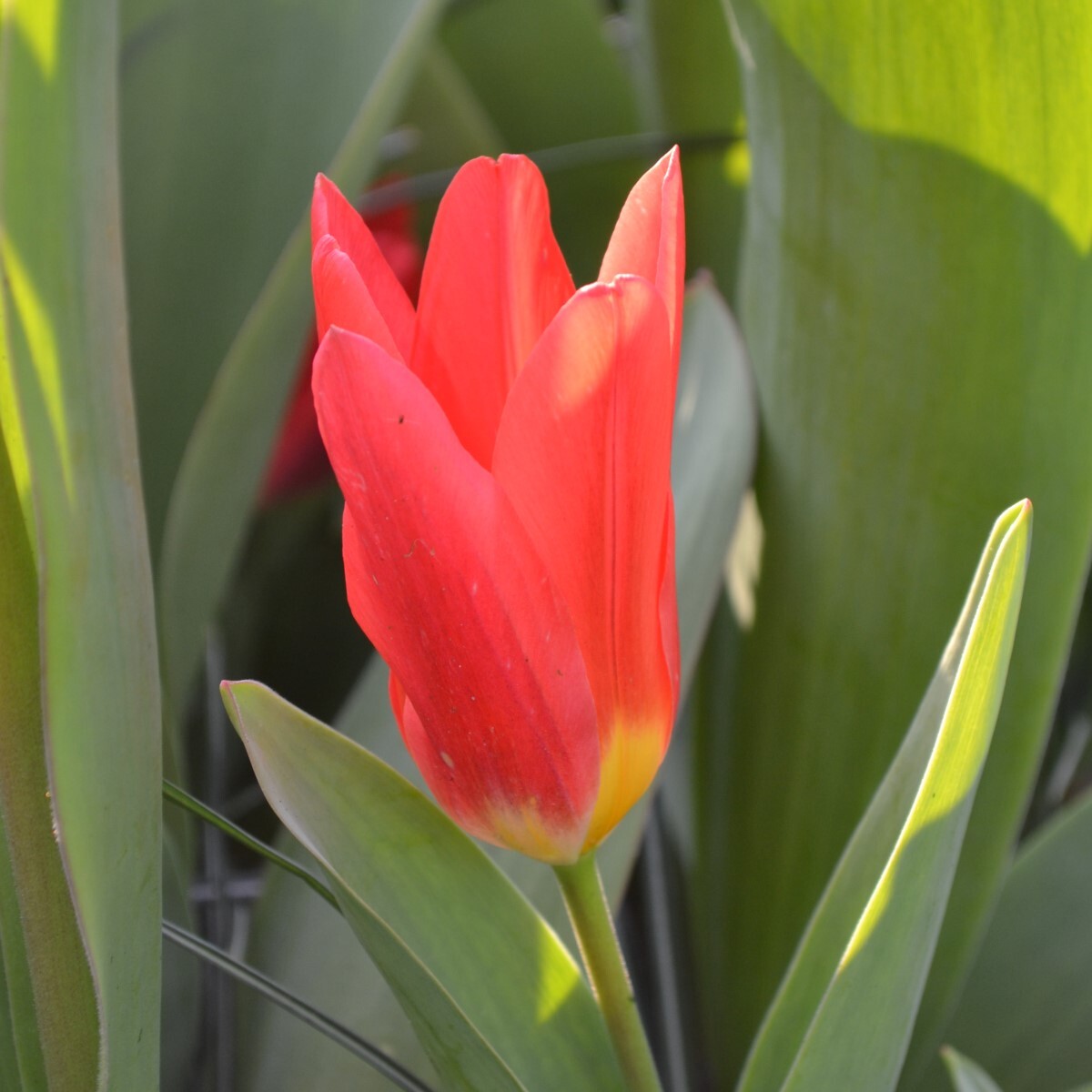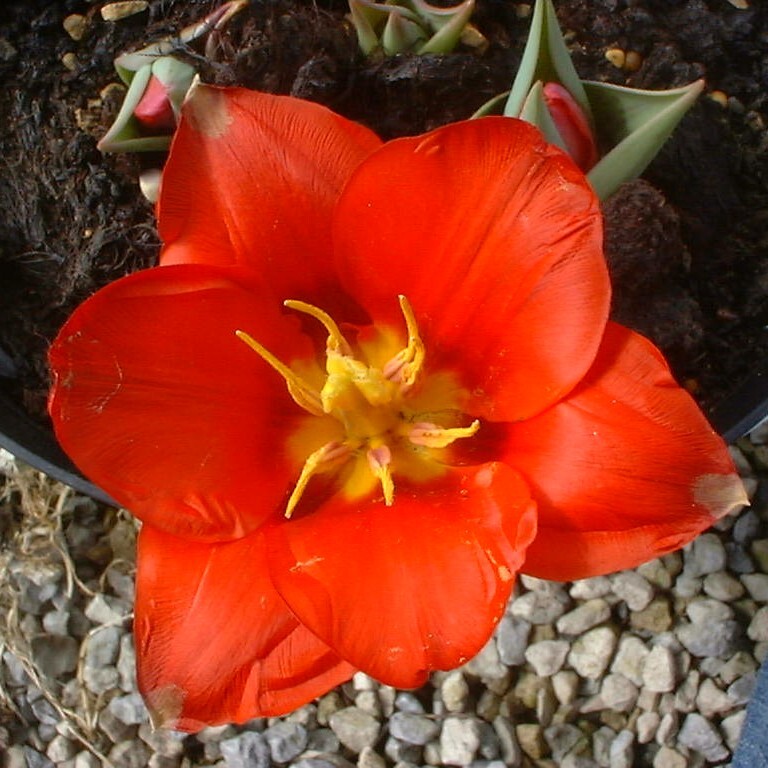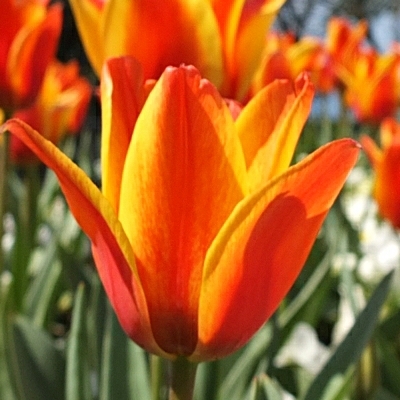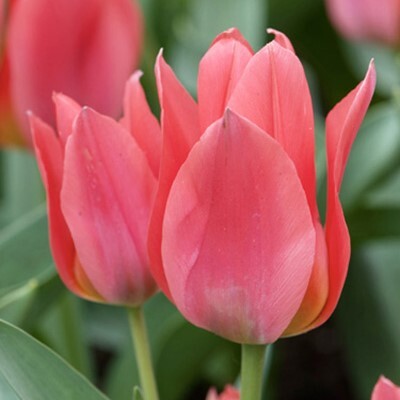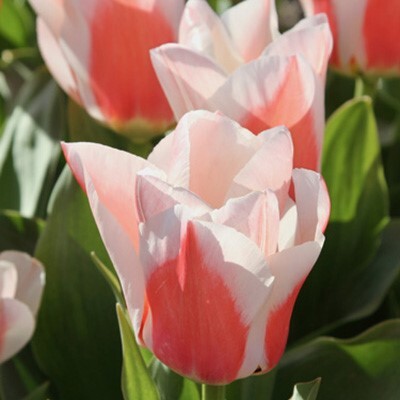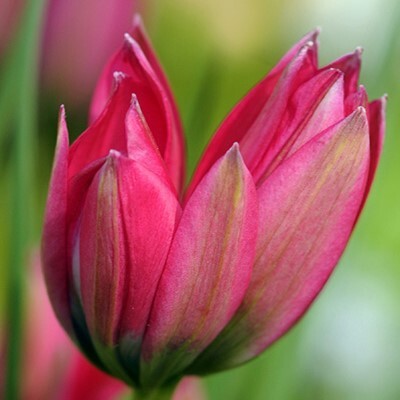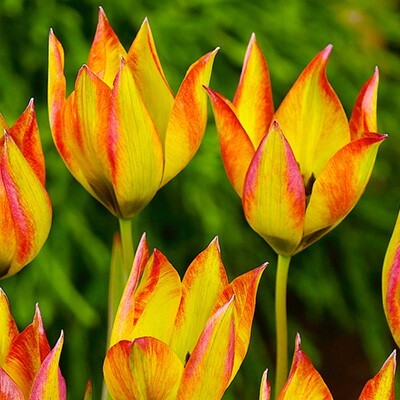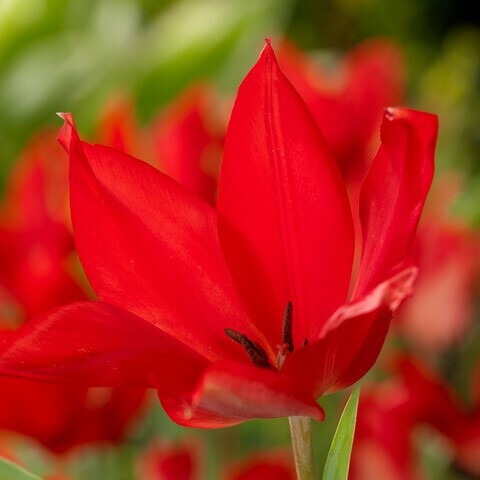Tulips, like Narcissus, have been divided up into various groups or divisions - and which division each variety belongs to is generally decided by a combination of factors including flower size and shape, flowering time and height. Although this may seem quite arbitrary, it is very useful for the gardener - when planning succession planting, when aiming for varieties to flower at the same time, or even whether to plant at the front or the back of a border. Although some of the division names such as 'Single Early' are easy to understand, some of the others are less clear, so let's have a look at all 15 divisions, their characteristics and uses in the garden.
Exactly as the name suggests - single cup-shaped flowers, normally appearing at the end of March and early April. An excellent choice for early colour, generally don't grow too tall so also good for pots and containers. Simple and elegant.
Again, early to flower and slightly shorter-stemmed than some others (generally around 40cm tall), these have fully double bowl-shaped flowers, like a peony. They last for a long while, and make excellent cut-flowers. There is wide range of colours, and combine well with single flowered tulips for contrast in colour and form.
This group had its origins in the hybridization of single early and single late tulips, so can more easily be though of as mid-season tulips. Single flowered, medium height, and flowering from early to late April. The flowers tend to have more rounded petals and are available in a wide range of colours. Strong-stemmed and normally a medium height of approx. 50cm, these are some the best general purpose bedding varieties for garden use.
Huge single flowers born on tall stems, these are some of the showiest flowers in the tulip world. Flowering slightly later than the Triumph group, and available in a wide range of colours. They also tend to reappear in subsequent years more succesfully than some others, so you should get several years of flower from varieties in this group.
Long stems, late-flowering - from the end of April through until May. Excellent to prolong the tulip season after the earlier varieties have finished, or to fill the gap until the first alliums come into flower.
Some of the most elegant of all tulips, with long, slim flowers with pointed petals which start to flare out slightly at the tips, before opening out into large stars up to 15cm across. Late flowering, around the middle of May.
Single flowers, normally mid-late flowering, and characterised by a delicate fringed edge to each petal, often in a contrasting colour. Some in this group are extremely showy, and best enjoyed in clumps on their own, but there are also more simple pure white and yellow vareities, where the fringed petals add extra texture to a border and will coimbine very happily with other spring bulbs.
A very popular group, characterised by the prominent green feather running up each petal. A smaller group, only 50 or so cultivars are known, the most popular of which is the elegant 'Spring Green'. Mid- to late season in flower, and very popular as a cut flower.
Division 9 - Rembrandt.
A curious group, characterised by striped or 'broken' flowers in a mix of colours. This group had some of the most sought-after flowers at the height of 'Tulipmania' in the 17th Century, the unique colourings are actually the result of a virus, which makes the flowers extremely variable and short-lived. There are no true Rembrandt varieties still commercially available.
If you like bright and bold, this is the division for you! This croup is characterised by the curled, fringed and twisted petals of the large flowers, often multi-coloured. Generally later into flower (May). Excellent for pots and containers.
Large, fully double peony-like flowers, up to 12cm wide. Long-lasting and generally with some fragrance, they are loved by flower arrangers. Can require a little protection or support, as the flowers are so large they can get damaged by heavy rain.
Division 12 - Kaufmanniana Hybrids.
Excellent for naturalising at the front of a border or rockery. Shorter-stemmed, with flowers that open out into large stars or water-lilies. The foliage often has a stripe down the centre of each leaf, adding to the decorative appeal. Generally flowering early to mid-season, this is an extremely useful and popular group for providing lots of colour in a small space.
Division 13 - Fosteriana Hybrids.
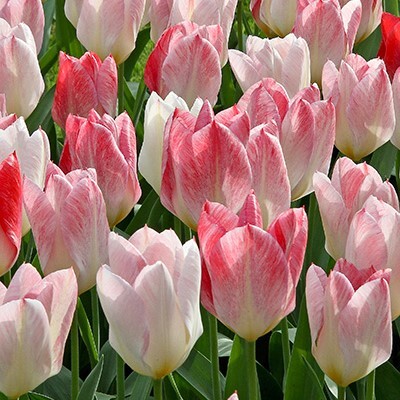
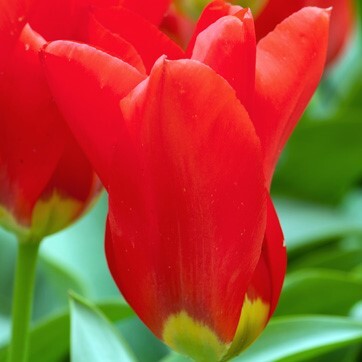
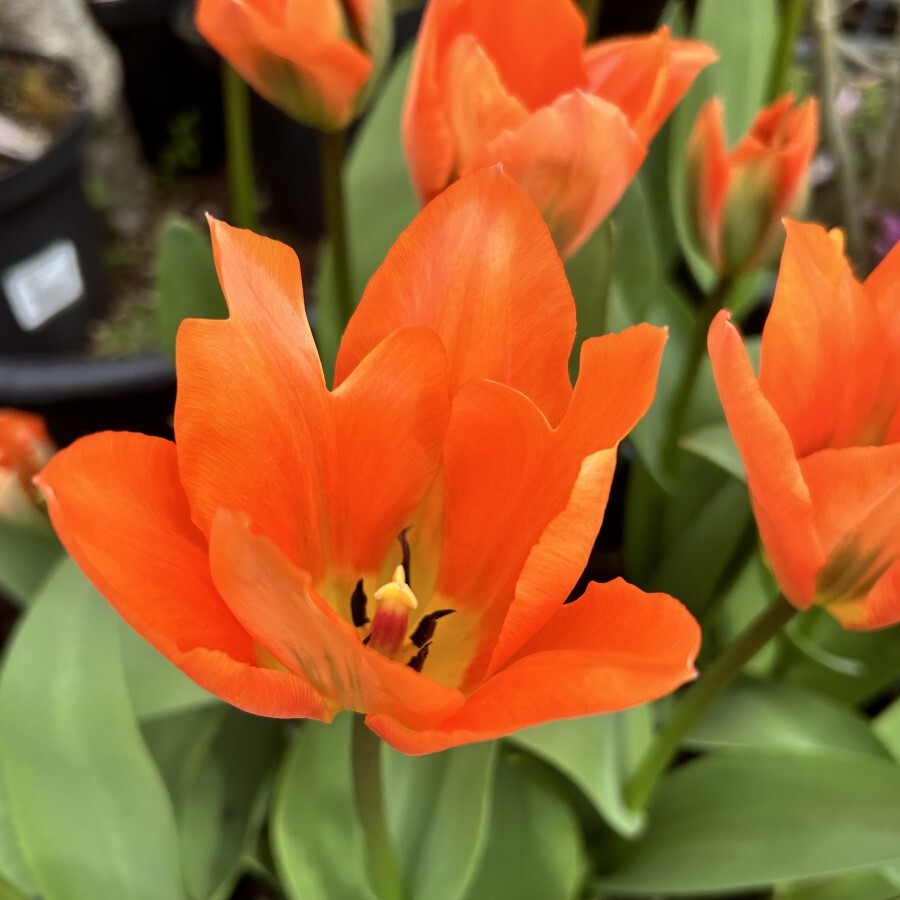
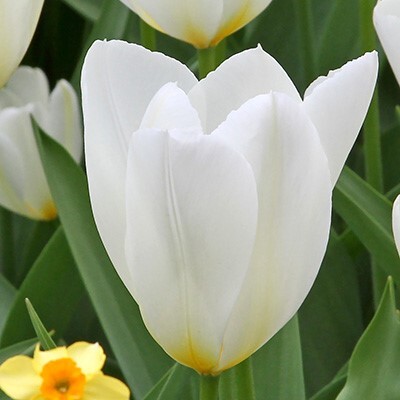 Greigii Tulipa 'Double Red Riding Hood'
Greigii Tulipa 'Double Red Riding Hood'
Grown for the huge size of the flowers - some of these 'Emperor' tulips have flowers which will open up to 20cm across in full sun. Early into flower, and strong stemmed to support those large flowers, these are an excellent choice for bedding and borders.
Division 14 - Greigii Hybrids.
Another group of dwarf tulips, similar to the Kaufmanniana division, but later into flower. Lovely marbled or striped foliage, and will reliably return in subsequent years. Often multi-headed. Another excellent choice for the front of a border.
A varied division, containing a mix of true species and some cultivars or hybrids of those species. Also known as Botanical Tulips, they tend to be shorter, with slightly smaller flowers than the more modern hybrids. This group contains some of the most delicate and elegant flowers of all, deserving of a special container or pot to truely admire them at close quarters. Many are early into flower - the T. praestans cultivars in particular. Hardy and will generally return year after year.

